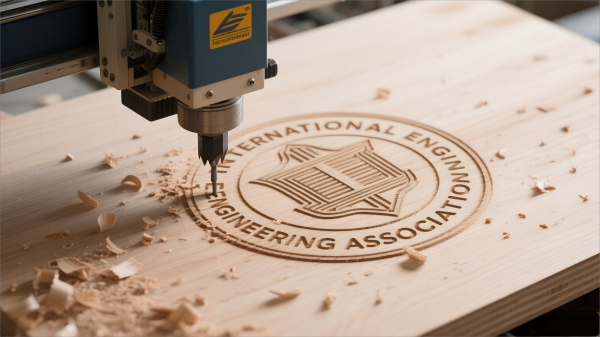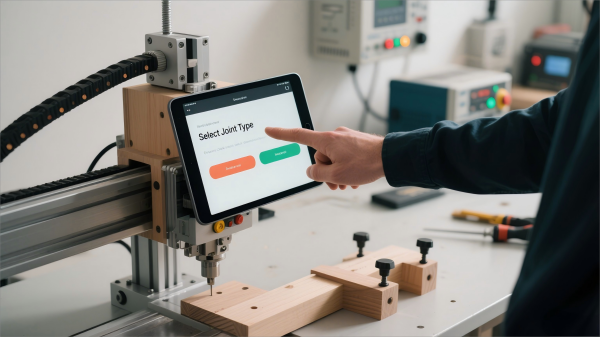CNC woodworking machines have revolutionized the woodworking industry, enabling precision, efficiency, and creativity in crafting furniture, cabinetry, and intricate designs. As demand grows for these Computer Numerical Control (CNC) tools, so do questions about their use, features, and benefits.
1. What Is a CNC Woodworking Machine and How Does It Work?
A CNC woodworking machine 🛠️ uses computer-programmed instructions to control cutting tools, shaping wood with unparalleled accuracy. It operates via G-code, which dictates tool paths, speeds, and depths. Users design projects in CAD/CAM software, then the machine executes the plan, cutting, drilling, or carving wood. Common types include 3-axis routers for flat panels and 5-axis machines for complex shapes. This automation reduces manual labor and ensures consistent results, making CNC woodworking machines ideal for both hobbyists and professionals.
Table 1: Types of CNC Woodworking Machines
|
Machine Type |
Description |
Best Use for CNC Woodworking Machine |
|---|---|---|
|
3-Axis Router |
Moves along X, Y, Z axes |
Flat panels, signage, cabinetry |
|
4-Axis Router |
Adds rotation around one axis |
Cylindrical carvings, turned legs |
|
5-Axis Router |
Full rotational movement |
Sculptures, complex furniture |

2. What Materials Can a CNC Woodworking Machine Process?
CNC woodworking machines are versatile, handling hardwoods (e.g., oak, walnut), softwoods (e.g., pine, cedar), plywood, MDF, and even non-wood materials like acrylic or aluminum for hybrid projects. The machine’s spindle power and tooling selection 📏 determine compatibility. For example, high-density materials require robust spindles** and e.g., carbide bits. Always match the CNC woodworking machine’s capabilities to your material to avoid tool wear or poor finishes.
3. How Do I Choose the Right CNC Woodworking Machine?
Selecting a CNC woodworking machine depends on your project needs, budget, and workspace. Consider:
-
Work Area Size: Ensure the machine’s bed accommodates your largest workpieces.
-
Spindle Power: Higher wattage (e.g., 3-6 kW) suits dense woods.
-
Software Compatibility: Choose machines supporting user-friendly CAD/CAM like Vectric or Fusion 360.
-
Build Quality: Look for sturdy frames to minimize vibrations. Brands like ShopBot or Axiom Precision offer reliable options. Researching specifications ensures your CNC woodworking machine meets production demands.
4. Is It Difficult to Learn to Operate a CNC Woodworking Machine?
Learning to use a CNC woodworking machine 🧰 is approachable with proper training. Beginners can start with free tutorials on platforms like YouTube or paid courses from CNC Router Parts. Key skills include:
-
Reading technical drawings.
-
Writing or editing G-code.
-
Setting up workpieces and tools. Most users master basic operations within weeks, but advanced techniques like tool path optimization require practice. A CNC woodworking machine’s user-friendly software simplifies the learning curve.
Table 2: Learning Resources for CNC Woodworking Machines
|
Resource |
Description |
Benefit for CNC Woodworking Machine Users |
|---|---|---|
|
Vectric Tutorials |
Video guides on CAD/CAM |
Simplifies design and programming |
|
CNC Router Parts Courses |
In-depth operator training |
Covers setup, safety, and maintenance |
|
Online Forums (e.g., CNCZone) |
Community discussions |
Real-world tips and troubleshooting |
5. What Are the Costs Associated with a CNC Woodworking Machine?
Costs for a CNC woodworking machine vary widely:
-
Entry-Level: $2,000-$10,000 (e.g., hobbyist routers).
-
Mid-Range: $10,000-$50,000 (e.g., small business models).
-
Industrial: $50,000+ (e.g., high-speed production). Additional expenses include tooling (bits, collets), software licenses, and maintenance. Operating costs like electricity and material waste also add up. Budgeting for a CNC woodworking machine requires factoring in long-term ROI, especially for commercial use.
6. How Do I Maintain a CNC Woodworking Machine?
Maintenance is critical for a CNC woodworking machine’s longevity. Key tasks include:
-
Cleaning: Remove dust and debris daily to prevent motor strain.
-
Lubrication: Apply grease to linear rails and bearings weekly.
-
Calibration: Check alignment of spindle and gantry monthly.
-
Tool Inspection: Replace worn bits to avoid poor cuts. Following the manufacturer’s manual ensures optimal performance. Neglecting maintenance can lead to costly repairs, impacting your CNC woodworking machine’s reliability.

7. What Safety Precautions Should I Take with a CNC Woodworking Machine?
Safety is paramount when operating a CNC woodworking machine 📐. Always:
-
Wear PPE (e.g., safety glasses, ear protection).
-
Secure workpieces with clamps or vacuum tables.
-
Keep hands clear of moving parts.
-
Use emergency stop buttons for quick shutdowns. Adhere to OSHA guidelines for machine safety. Training on your CNC woodworking machine’s specific safety features builds trust in its operation.
8. Can a CNC Woodworking Machine Support Small Business Growth?
Absolutely. A CNC woodworking machine enables small businesses to produce custom designs, prototypes, and high-volume orders efficiently. For example, a 3-axis router can craft cabinet doors or personalized signs, attracting diverse clients. Automation reduces labor costs, while precision enhances product quality. Investing in a CNC woodworking machine positions businesses for scalability and market competitiveness.
Table 3: Business Benefits of CNC Woodworking Machines
|
Benefit |
Description |
Impact on CNC Woodworking Machine Users |
|---|---|---|
|
Customization |
Produces unique designs |
Attracts niche markets |
|
Efficiency |
Automates repetitive tasks |
Reduces production time |
|
Precision |
Ensures tight tolerances |
Improves product quality |
9. What Are the Latest Trends in CNC Woodworking Machines?
The CNC woodworking machine industry is evolving with trends like:
-
Hybrid Machines: Combining CNC with laser cutting or 3D printing.
-
AI Integration: Optimizing tool paths for efficiency.
-
IoT Connectivity: Remote monitoring via apps. These advancements enhance productivity and creativity. Staying updated through sources like Woodworking Network ensures your CNC woodworking machine aligns with industry standards.
Common Industry Problems and Solutions
-
Problem: Poor Surface Finish
Inconsistent cuts or rough surfaces reduce part quality.
Solution: Check spindle speed and feed rate settings, replace dull bits, and ensure proper material clamping. Calibrating the CNC woodworking machine and optimizing tool paths improves finish quality. -
Problem: Machine Vibrations
Vibrations cause inaccurate cuts and tool wear.
Solution: Tighten loose bolts, level the machine base, and use anti-vibration pads. Regular maintenance of the CNC woodworking machine’s gantry and bearings minimizes vibrations. -
Problem: Software Errors
Incorrect G-code or CAD files lead to machining mistakes.
Solution: Validate designs in simulation software like Cut3D. Update CAD/CAM tools regularly and train operators to debug G-code, ensuring reliable CNC woodworking machine performance.
Conclusion
CNC woodworking machines empower creators with precision and versatility, but understanding their features, costs, and maintenance is key to success. This Q&A guide, rooted in E-E-A-T principles, addresses critical questions to help you make informed decisions. Whether you’re a hobbyist or business owner, a CNC woodworking machine can transform your craft. Explore these insights and start leveraging this technology today.
Glossary of Terms
-
Computer Numerical Control (CNC): Automated system using computer instructions to control tools.
-
G-code: Programming language for CNC tool movements.
-
CAD/CAM Software: Tools for designing (CAD) and generating machining instructions (CAM).
-
3-axis Router: CNC machine moving along X, Y, Z axes.
-
5-axis Machine: CNC machine with additional rotational axes for complex shapes.
-
Spindle: Motor-driven component holding and rotating cutting tools.
-
Tooling: Bits and accessories used for cutting or shaping.
-
PPE: Personal protective equipment, e.g., glasses, gloves.
-
Vacuum Tables: Workholding system using suction to secure materials.
Authoritative References
-
Woodworking Network. (2025). CNC Woodworking Machines: Technology Trends. https://www.woodworkingnetwork.com/technology/cnc-machines
-
ThomasNet. (2024). Guide to CNC Routers for Woodworking. https://www.thomasnet.com/articles/machinery-tools-supplies/cnc-routers-woodworking/
-
CNC Router Parts. (2024). CNC Router Training Resources. https://www.cncrouterparts.com/training.html
-
Modern Woodworking. (2025). Choosing the Right CNC Machine for Wood. https://www.modernwoodworking.com/articles/choosing-cnc-woodworking-machine